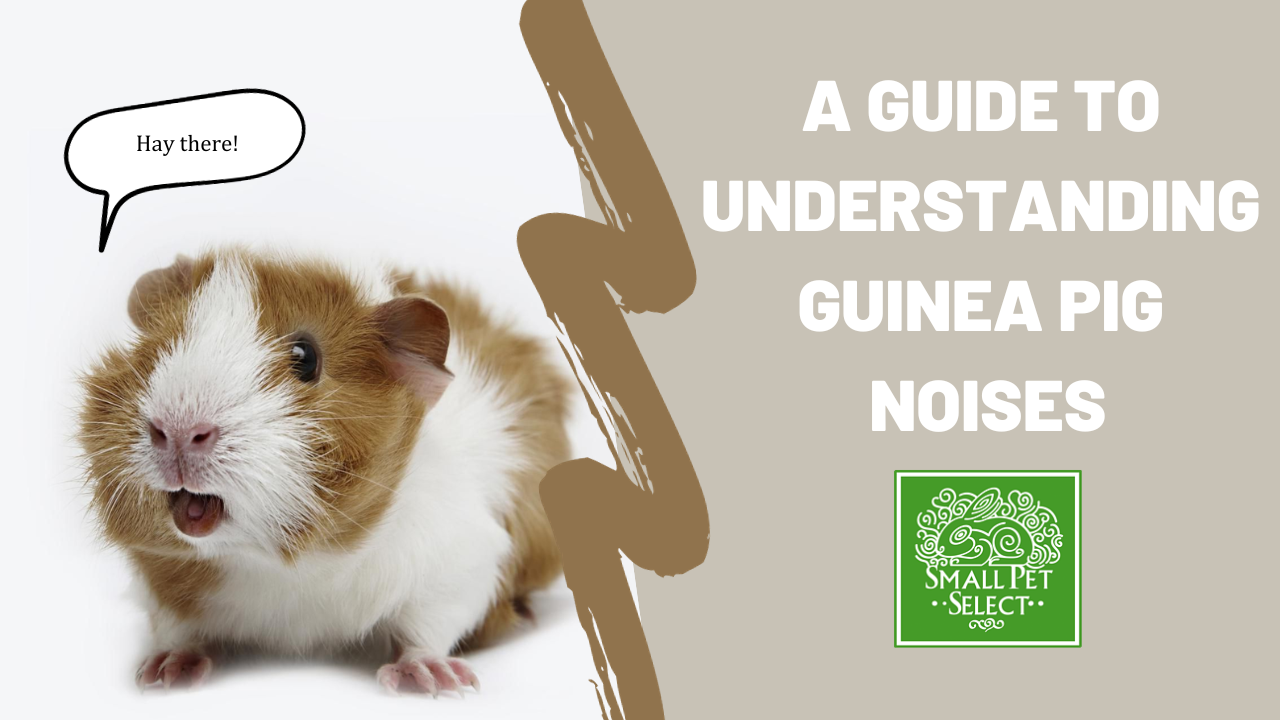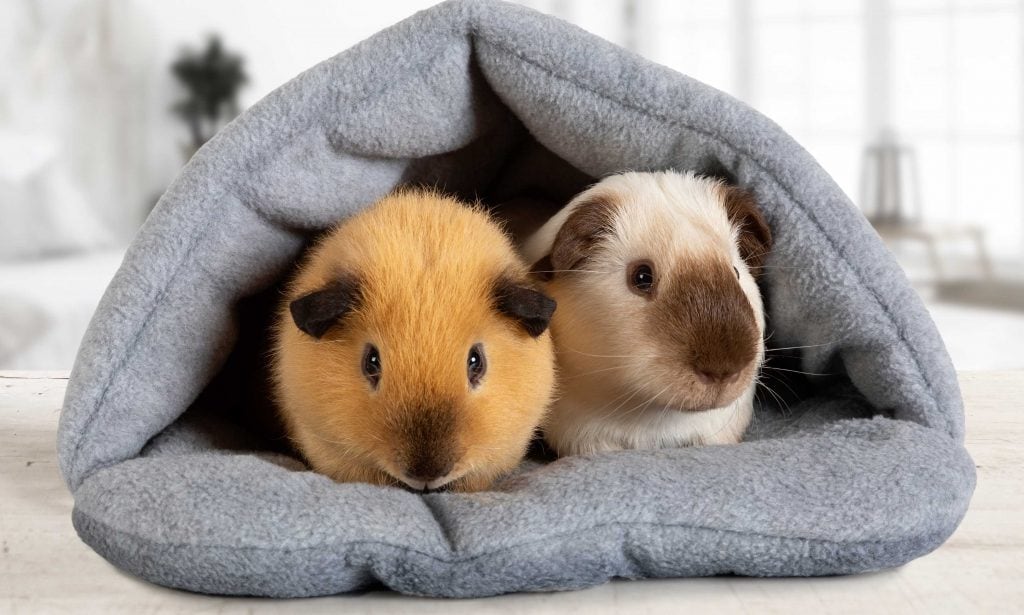Guinea pig sounds can convey various messages, from happiness to fear or hunger. Understanding these vocalizations is crucial for proper care.
Let’s delve into the different types of sounds guinea pigs make and what they signify. Guinea pigs are social animals that communicate through a range of vocalizations. By decoding these sounds, you can better understand your furry friend’s needs and emotions.
Paying attention to their noises will help you provide the best care and strengthen your bond with them.

Credit: medium.com
Contents
- Introduction To Guinea Pig Vocalizations
- Types Of Guinea Pig Noises
- Wheeking: The Call For Attention
- Purring: Contentment Or Discontent?
- Chutting And Whining: Expressing Needs And Wants
- Rumbling: The Mating Dance
- Chirping: The Mysterious Sound
- Teeth Chattering: A Sign Of Aggression
- Interpreting Guinea Pig Sounds
- Enhancing Human-guinea Pig Bond Through Sound
- Frequently Asked Questions
- Conclusion
Introduction To Guinea Pig Vocalizations
Discover the fascinating world of guinea pig vocalizations and learn how to decode their sounds. Gain a detailed understanding of different guinea pig vocalizations and what they communicate, providing valuable insights into your furry friend’s feelings and needs.
The Importance Of Sound In Guinea Pig Communication
Guinea pigs are social animals, and they use a variety of vocalizations to communicate with each other. These sounds can range from soft purrs to loud whistles, and each has a specific meaning. Understanding guinea pig vocalizations is essential for pet owners to ensure their pets’ well-being and to strengthen the bond between the owner and the pet.
Brief History Of Guinea Pig Domestication And Vocal Evolution
Guinea pigs are native to the Andes Mountains in South America and have been domesticated for over 7,000 years. They were initially bred for their meat, but over time they became popular pets due to their friendly and docile nature. Guinea pig vocalizations have evolved over time as they have adapted to living in captivity. It is believed that their vocalizations have become more complex, allowing them to communicate more effectively with their owners and other guinea pigs.
Guinea pigs are a great pet, and there’s no better way to bond with them than to learn to understand their language. This is one of those things that makes them such a uniquely interesting and satisfying pet. In the next sections of this post, we will delve into the details of different types of guinea pig vocalizations and what they signify.
Types Of Guinea Pig Noises
Guinea pigs are known for their wide range of vocalizations, each with its own unique meaning. Understanding these sounds is crucial for guinea pig owners to provide appropriate care and address their pets’ needs effectively.
Identifying Common Guinea Pig Sounds
Guinea pigs make various common sounds to communicate with their owners and other guinea pigs. These vocalizations include chirping, purring, and teeth chattering. It’s essential to recognize and interpret these sounds to ensure the well-being of your pet.
Rare And Unusual Guinea Pig Vocalizations
Occasionally, guinea pigs may produce rare and unusual vocalizations such as screaming, which could indicate distress or pain. Understanding these atypical sounds is crucial for identifying potential health issues and providing prompt veterinary care if necessary.
Wheeking: The Call For Attention
Guinea pigs are known for their adorable and distinctive vocalizations, and one of the most common sounds they make is wheeking. Wheeking is a high-pitched noise that guinea pigs produce when they want to grab your attention or communicate something important. Understanding what stimulates wheeking and the differences in wheeking among individual guinea pigs can help you better understand and respond to your furry friend’s needs.
What Stimulates Wheeking
Guinea pigs wheek in response to various stimuli that capture their interest or trigger excitement. These little creatures are quite expressive, and wheeking is their way of getting your attention. Here are some common situations that can stimulate wheeking:
- Mealtime: Guinea pigs are enthusiastic eaters, and they will often wheek in anticipation of their favorite meals or treats.
- Human Presence: Guinea pigs are social animals, and they enjoy interaction with their human companions. They may wheek when they see or hear you approaching their enclosure.
- Playtime: Guinea pigs love to play and explore their surroundings. They may wheek when they are excited about playtime or when they want to engage in a game with you.
- Environmental Changes: Guinea pigs are sensitive to changes in their environment. Wheeking can be their way of expressing curiosity or concern about something new or unfamiliar in their surroundings.
Differences In Wheeking Among Individual Guinea Pigs
Just as humans have different personalities and ways of expressing themselves, guinea pigs also have their individual quirks. While wheeking is a common sound among guinea pigs, the intensity, frequency, and duration of wheeks can vary from one guinea pig to another. Some guinea pigs may be more vocal and wheek frequently, while others may wheek less often.
To understand your guinea pig’s unique communication style, pay attention to its behavior and wheeking patterns. Observing how it wheeks in different situations can help you develop a deeper bond with your pet and ensure it’s getting its needs met effectively.
Purring: Contentment Or Discontent?
Guinea pigs communicate through various vocalizations, and understanding their sounds is essential for pet owners. This article provides detailed explanations of different guinea pig vocalizations, including purring, helping readers decode their pets’ contentment or discontent. Discover what your furry friend is trying to tell you through their unique sounds.
Understanding The Context Of Purring
Purring is one of the most common vocalizations that guinea pigs make, but it can have different meanings depending on the context. Understanding the context in which your guinea pig purrs is crucial to deciphering its message.
Similarities To Feline Purring
Interestingly, guinea pig purring shares similarities with feline purring. While the sounds may differ slightly, both species use purring as a form of communication. It is believed that both guinea pigs and cats purr to express contentment, relaxation, and a sense of security. However, it’s important to note that there are also key differences in the way they use purring to communicate their emotions.
A pet guinea pig’s purr is not always synonymous with contentment. In fact, guinea pigs may purr when they are happy, unhappy, or afraid. In addition to analyzing the purr itself, it is important to observe the guinea pig’s body language and any accompanying sounds, such as teeth chattering or squealing, to assess its emotional state.
Body Language Clues
Guinea pigs often exhibit specific body language cues when they purr, which can help determine whether they are expressing contentment or discontent. When a guinea pig is purring out of contentment, you may observe relaxed body posture, closed eyes, and a generally calm demeanor. On the other hand, if a guinea pig is purring due to discontent, they may display signs of tension, such as raised fur, hunched posture, and vocalizations that are more intense or frequent.
Accompanying Vocalizations
In addition to purring, guinea pigs may produce other vocalizations that can provide further insight into their emotional state. If a guinea pig purrs alongside high-pitched squealing or teeth chattering, it may indicate feelings of fear, anxiety, or discomfort. On the contrary, if the purring is accompanied by soft chirping or rumbling sounds, it is more likely a sign of contentment and relaxation.
Observing The Environment
To fully understand the meaning behind a guinea pig’s purring, it is essential to consider the environmental factors at play. If a guinea pig purrs while being petted or during a gentle interaction, it is usually a positive indication of contentment. However, if the purring occurs in response to a loud noise, sudden movements, or when the guinea pig feels threatened, it may be a sign of discontent or stress.
Chutting And Whining: Expressing Needs And Wants
Guinea pigs are adorable and expressive creatures, and their vocalizations play a crucial role in communicating their needs and desires. Understanding the meaning behind their sounds can help you provide the best care for your furry friends. In this post, we’ll delve into the intricacies of chutting and whining, exploring how these vocalizations enable guinea pigs to express their needs and wants.
Interpreting Chutting In Daily Activities
Chutting is a common vocalization among guinea pigs, and it serves as a way for them to express contentment and happiness. When guinea pigs emit soft, rapid chutting sounds, it often indicates that they are feeling relaxed and comfortable in their environment. This gentle vocalization can often be heard during social interactions among guinea pigs, signifying their enjoyment of each other’s company. Additionally, chutting may also occur while guinea pigs are exploring their surroundings, demonstrating their curiosity and engagement with the environment.
Whining As A Signal For Discomfort
Guinea pigs use whining as a means to communicate their discomfort or unease. When a guinea pig emits high-pitched, repetitive whining sounds, it’s essential to pay attention to their behavior and surroundings. This vocalization often indicates that the guinea pig is experiencing distress, such as feeling hungry, thirsty, or lonely. Additionally, whining may also signify physical discomfort or pain, prompting the need for immediate attention and care from their owner. By recognizing the significance of whining, guinea pig owners can ensure the well-being and happiness of their beloved pets.

Credit: smallpetselect.com
Rumbling: The Mating Dance
Guinea pigs love to rumble, and these rumbles play a big part in their lives, especially when it comes to their special ways of dancing.
The Role Of Rumbling In Courtship
Rumbling is a common vocalization among guinea pigs, especially during courtship and mating. It serves as a form of communication between potential mates, indicating interest and readiness to engage in the mating ritual.
How To Distinguish Mating Sounds From Other Rumblings
- Mating sounds are often more intense and prolonged than regular rumblings.
- During courtship, guinea pigs may exhibit specific body language cues along with rumbling.
- Observing the behavior of guinea pigs along with their vocalizations can help differentiate mating sounds from other rumblings.
Chirping: The Mysterious Sound
Theories Behind Guinea Pig Chirping
Guinea pig chirping has puzzled many pet owners.
- Chirping may signal excitement or happiness.
- Some believe it’s a form of communication.
- Others suggest it could be a sign of stress.
Documented Instances Of Chirping And Their Possible Meanings
Guinea pigs chirp in various situations:
- When exploring new environments.
- During interactions with other guinea pigs.
- While being fed or anticipating food.

Credit: be.chewy.com
Teeth Chattering: A Sign Of Aggression
Teeth chattering in guinea pigs can be a sign of aggression. This vocalization is often accompanied by raised fur and a stiff body posture. Understanding these sounds can help guinea pig owners better communicate with their pets and ensure their well-being.
When And Why Guinea Pigs Chatter Their Teeth
Guinea pigs chatter their teeth when feeling threatened or displaying aggression.
Dealing With Aggressive Behaviors In Guinea Pigs
Address aggressive behaviors by providing a calm environment and avoiding triggers.
Interpreting Guinea Pig Sounds
Tips For Understanding Your Guinea Pig’s Language
- Listen for high-pitched squeaks, a sign of happiness.
- Pay attention to teeth chattering, signaling annoyance.
- Observe purring sounds, indicating contentment.
The Role Of Body Language In Conjunction With Vocalizations
Guinea pigs use body language alongside sounds to communicate their feelings.
When a guinea pig purrs and stretches out comfortably, it’s content.
On the other hand, if it stands on its hind legs while squeaking loudly, it might be scared.
Enhancing Human-guinea Pig Bond Through Sound
Enhancing the bond between humans and guinea pigs goes beyond just cuddles and treats. Understanding and responding to your guinea pig’s vocalizations is a crucial component of nurturing a strong and trusting relationship. By decoding and appropriately responding to guinea pig sounds, you can build a deeper connection with your furry companion and ensure their well-being.
How Responding To Sounds Can Strengthen Your Relationship
When you learn to interpret and respond to your guinea pig’s vocalizations, you are actively engaging with them and showing that you understand their needs. This creates a sense of trust and security, strengthening the bond between you and your pet. By acknowledging and addressing their sounds, you can demonstrate your attentiveness and care, leading to a more fulfilling relationship.
Training Your Guinea Pig Using Sound Cues
Guinea pigs are highly receptive to sound cues, making it possible to train them using vocal commands. By associating specific sounds with desired behaviors or actions, you can effectively communicate with your guinea pig and encourage positive habits. Through consistent reinforcement and positive reinforcement, you can establish a communication channel based on sound cues, further enhancing your bond and understanding with your pet.
Frequently Asked Questions
What Are The Different Sounds That Guinea Pigs Make?
Guinea pigs make a variety of sounds, including squeaks, whistles, chirps, purrs, and grunts. Each sound has a different meaning, such as expressing happiness, fear, or hunger.
How Can I Tell If My Guinea Pig Is Happy?
A happy guinea pig will make a low, vibrating purring sound, and may also make soft chirping or squeaking noises. They may also hop around or do “popcorning,” which is when they jump up and down while twisting their bodies.
What Does It Mean When My Guinea Pig Is Chattering Their Teeth?
Chattering teeth in guinea pigs is a sign of annoyance or anger. It’s often accompanied by a stiff body posture and may be a warning sign that they’re about to bite or lunge.
Can Guinea Pigs Communicate With Each Other Through Sounds?
Yes, guinea pigs use sounds to communicate with each other. They can express dominance, submission, fear, and affection through different vocalizations.
Conclusion
Understanding guinea pig sounds is essential for their welfare. By decoding their vocalizations, you can better respond to their needs and emotions. Whether it’s a contented purr or a warning squeak, being attuned to their sounds can strengthen your bond and ensure a happy, healthy relationship with your furry companions.


